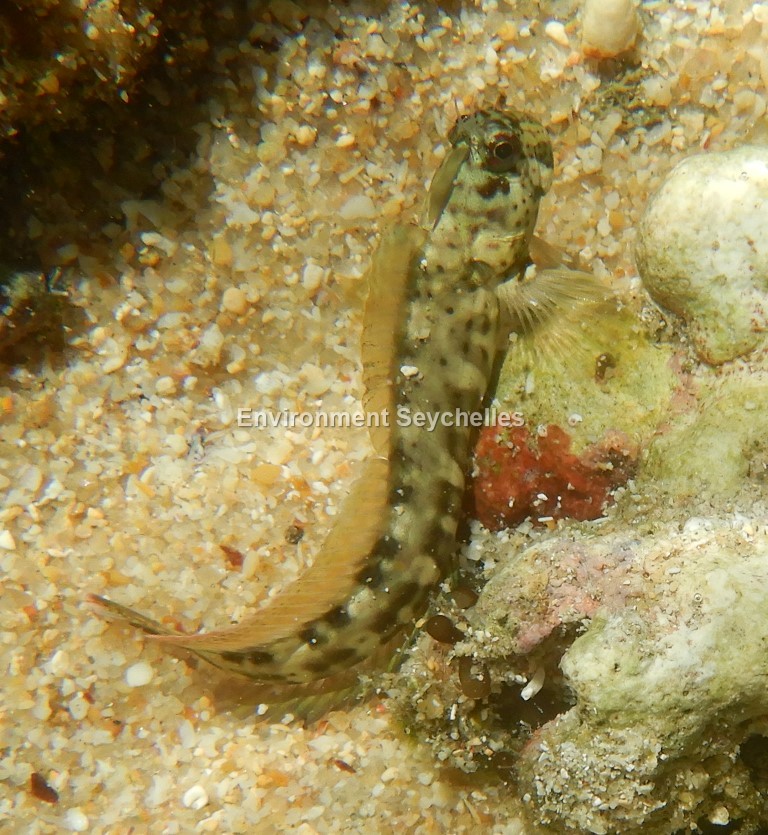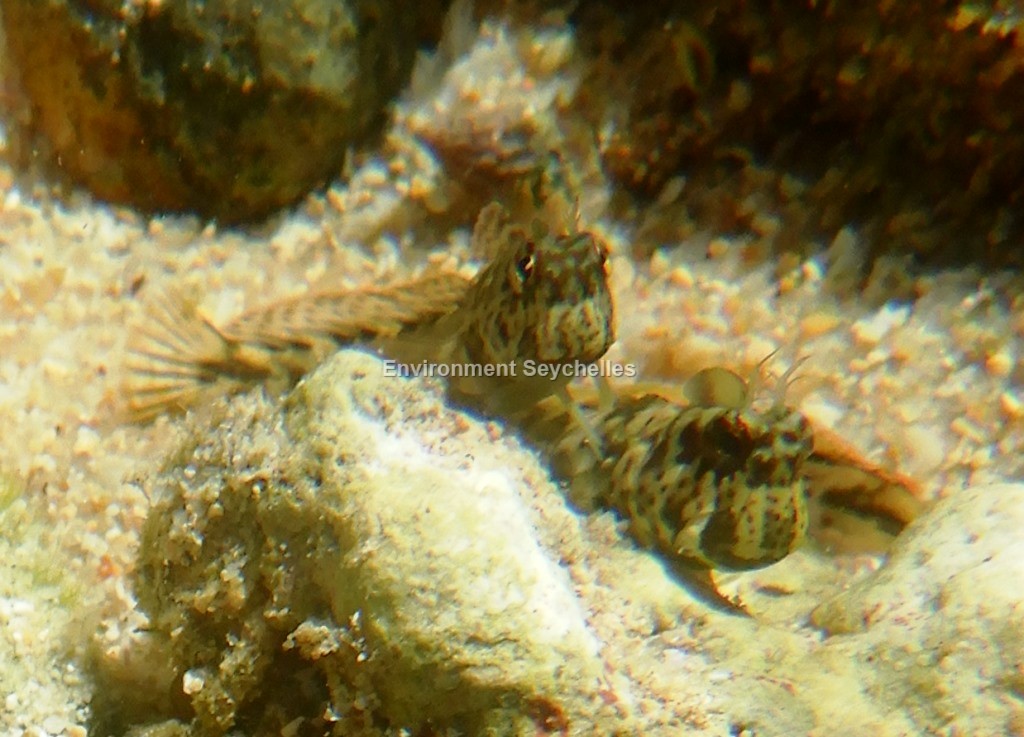Description:
Dorsal spines: 12-14; Dorsal rays: 19-24; Anal spines: 2; Anal rays: 21-25.
Body elongate. Nape lacking cirri. Supraorbital tentacle variable, with up to 5 branches on each side. Red markings on iris. Several caudal-fin rays branched. Males
with fleshy crest on top of head.
Colour. Body light grey-brown. Colour patterns variable. Most consistent marking is dark spot distally between 1st and 2nd dorsal spines in both sexes. Males with
6-7 irregular double dusky bars on sides, often with broad dusky margins to segmented ray portions of dorsal, anal and caudal fins. Body bands in females tend to
form vertical rows of dusky spots. Numerous rows of dusky spots on dorsal and caudal fins. Anal fin uniformly dusky.
Size:
Maturity: Lm unknown. Range unknown. Max Length: 12cm TL.
Habitat and Ecology:
Inhabit sheltered rocky shorelines and mangroves (depth 0-3m). Oviparous, distinct pairing. Eggs are demersal and adhesive. Individuals are often seen leaping from
one rock pool to another.
Fishery Status:
This species is not protected or subject to fishery regulations. It is not subject to the fisheries.
Notes:
References:
Bray, D.J. (2017). Istiblennius dussumieri in Fishes of Australia, http://136.154.202.208/home/species/1912 (28/05/20).
Imamura, H. Fishes of the Andaman Sea. Istiblennius dussumieri. https://www.kahaku.go.jp/research/db/zoology/Fishes_of_Andaman_Sea/contents/blenniidae/14.html (28/05/20).
Froese, R. & D. Pauly. Eds. (2020). FishBase. https://www.fishbase.se/summary/7562 (28/05/20).
Smith, M & Heemstra, P Eds. (1999). Smiths’ Sea Fishes Edition 6. Springer-Verlag Berlin Heidelberg 10.1007/978-3-642-82858-4
Williams, J.T. (2014). Istiblennius dussumieri. The IUCN Red List 2014: e.T48342482A48377855. https://dx.doi.org/10.2305/IUCN.UK.2014-3.RLTS.T48342482A48377855.en. (28/05/20).
Citation:
Nevill, J.E.G. (2020). Istiblennius dussumieri, Dussumier's rockskipper. Seychelles Seatizens. https://seatizens.sc/species/istiblennius-dussumieri-valenciennes-1836/ (edited 20/06/22).



There are no comments